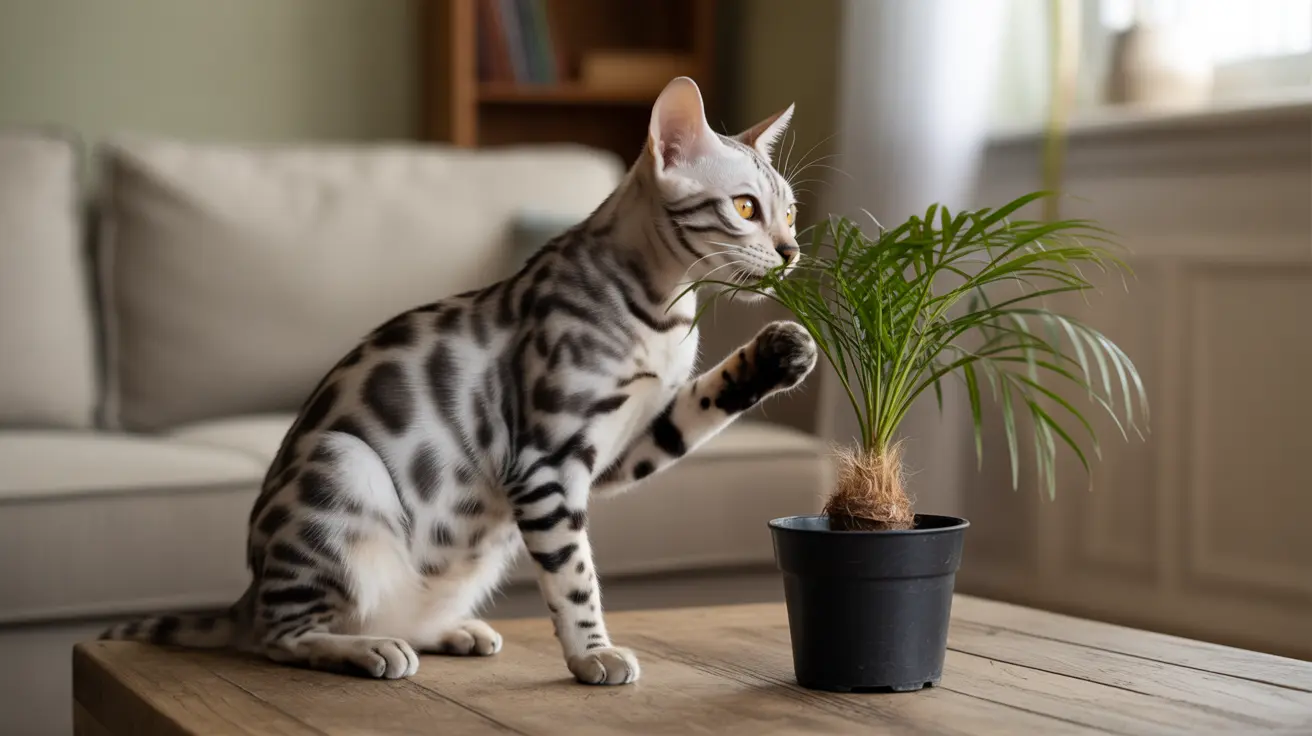For cat owners looking to add some greenery to their homes, the ponytail palm (Beaucarnea recurvata) presents an attractive option. With its distinctive bulbous trunk and flowing leaves, this unique houseplant catches both human and feline attention. But the crucial question remains: is the ponytail palm toxic to cats?
The good news is that the ponytail palm is officially recognized as non-toxic to cats by the American Society for the Prevention of Cruelty to Animals (ASPCA). However, there's more to consider than just toxicity when keeping this plant in a cat-friendly household.
Understanding the Ponytail Palm
Despite its common name, the ponytail palm isn't actually a palm at all. It's a member of the Agavaceae family, native to Mexico's semi-desert regions. The plant features a distinctive swollen base that stores water and long, thin leaves that cascade like a fountain, making it an eye-catching addition to any indoor space.
Safety Profile for Cats
Multiple veterinary sources and plant experts confirm that ponytail palms don't contain any substances toxic to cats. This makes them a safe choice for households with curious felines who might be tempted to nibble on plants.
However, while not poisonous, ingestion of ponytail palm leaves can still cause mild discomfort:
- Temporary stomach upset
- Minor digestive disturbances
- Possible vomiting (usually resolving quickly)
- Occasional drooling
Preventing Cat-Plant Interactions
Even though ponytail palms are non-toxic, it's best to minimize your cat's access to the plant. Here are effective strategies:
- Place plants on elevated surfaces or hanging planters
- Use natural deterrent sprays around the plant base
- Provide cat-specific plants like cat grass as alternatives
- Create physical barriers using decorative stones or plant covers
Signs to Watch For
While serious issues are rare, monitor your cat if they've been nibbling on ponytail palm leaves. Contact your veterinarian if you notice:
- Persistent vomiting
- Decreased appetite lasting more than 24 hours
- Lethargy or unusual behavior
- Difficulty swallowing
Safe Plant Placement Tips
Strategic placement of your ponytail palm can help ensure both plant and pet safety:
- Choose rooms where cats spend less time
- Use tall plant stands or wall-mounted planters
- Create designated "plant-free" zones for cats
- Consider using multiple smaller plants rather than one large specimen
Frequently Asked Questions
Is the ponytail palm toxic to cats if they eat its leaves?
No, ponytail palms are not toxic to cats. While ingestion might cause mild stomach upset, the plant contains no poisonous compounds that could harm your cat.
How do I prevent my cat from eating ponytail palm leaves?
Place the plant out of reach, use deterrent sprays, provide alternative plants like cat grass, and consider physical barriers around the plant base.
What symptoms should I look out for if my cat ingests a ponytail palm?
Watch for mild stomach upset, vomiting, or temporary lethargy. Most symptoms resolve quickly, but contact your vet if they persist beyond 24 hours.
Can I safely keep a ponytail palm in the same room as my cat?
Yes, ponytail palms can safely coexist with cats. Just ensure proper placement and monitoring to minimize direct interaction.
How does the non-toxicity of ponytail palms compare to other common houseplants for cats?
Ponytail palms are among the safest houseplants for cats, unlike truly toxic plants such as lilies or sago palms. They're a good choice for pet-friendly homes.
Conclusion
Ponytail palms offer a safe, attractive option for cat owners looking to incorporate plants into their home décor. While not toxic to cats, taking preventive measures to discourage plant-chewing behavior will ensure the best experience for both your feline friend and your foliage.
Remember that individual cats may react differently to plant material, so always monitor new interactions and consult your veterinarian with specific concerns about your pet's health and safety.






